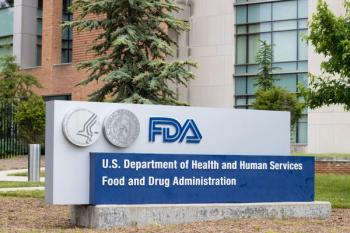
Antibiotic resistance: Impact on cost, outcomes
The impact of the reemergence of untreatable infections on our healthcare costs could be prohibitive. Find out what's being done about it.
The war against antibiotic resistance is now a full-blown effort among various sectors, including governmental agencies, medical companies, health systems, clinical societies, and payers.
Antibiotic resistance adds $20 billion in excess direct healthcare costs annually in the United States, plus an additional cost of $35 billion per year due to lost productivity, according to the
Hall“The use of antibiotics to treat infections has revolutionized medicine and allowed formerly untreatable conditions to be easily cured,” says Managed Healthcare Executive Editorial Adviser Don Hall, former health plan CEO and currently principal,
Among the most recent efforts to address this problem was a
Related:
More than 150 major food companies, retailers, and human and animal health stakeholders announced commitments to implement changes over the next five years to slow the emergence of resistant bacteria and prevent the spread of resistant infections.
“The government has long been active in combating antibiotic resistance,” says Arjun Srinivasan, MD, associate director for Healthcare Associated Infection Prevention Programs, Division of Healthcare Quality Promotion,
Related:
According to Srinivasan, the CDC has made great strides in posting and distributing timely and accurate information on antibiotic resistance and antibiotic use. “We need this type of information in order to target our efforts,” says Srinivasan.
The
(CARB), which the White House unveiled in March and for which funding is included in the CDC's proposed budget for fiscal 2016, further fuels this effort. The plan identifies critical actions federal departments and agencies should take to combat the rise of antibiotic-resistant bacteria.
Dr. CleemanJames I. Cleeman, MD, senior medical officer and director of the division of healthcare-associated infections at the
In particular, AHRQ is doubling its funding for CARB-related research this year, developing guidance and tools to help providers establish antibiotic stewardship programs, and promoting antibiotic stewardship in multiple healthcare settings, including hospitals, ambulatory care, and long-term care.
The agency has developed a toolkit to help hospitals reduce Clostridium difficile (C. difficile) infections and to help hospitals prevent and control carbapenem-resistant Enterobacteriaceae (CRE). It also funded a research project that is changing how clinicians in the intensive care unit approach the prevention of methicillin-resistant Staphylococcus aureus (MRSA).
In addition, AHRQ supports research and implementation projects focused on preventing healthcare-associated infections (HAIs). “Every infection prevented means one less episode needing antibiotics, which helps slow down the development of antibiotic resistance,” Cleeman says.
Within the next year, AHRQ and the CDC will host a meeting of experts and stakeholders to identify ways to prevent antibiotic-resistant hospital-acquired infections (HAIs).
To combat antibiotic misuse, AHRQ is also promoting its
FDA progress
Tim W. Irvin, press officer at
Since 2010, FDA has issued 11 guidance documents describing clinical trial designs for studying antibacterial drugs, including draft guidance on developing “
FDA also collaborates with the CDC and the
Related:
FDA is implementing
To date, FDA has granted 75 QIDP designations representing 50 different antibacterial/antifungal drugs. Since 2014, it has approved six new antibacterial/antifungal products with QIDP designation.
In 2013, FDA published
Historically, certain antimicrobials have been used in the feed or drinking water of cattle, poultry, hogs, and other food animals for production purposes, such as using less food to help animals gain weight. “Some of these antimicrobials are important drugs used to treat human infection, prompting concerns about the contribution of this practice to increasing the ability of bacteria and other microbes to resist a drug’s effects,” Irvin says. “Once a manufacturer voluntarily makes these changes, it will be illegal to use these medically important antibiotics for production purposes, and animal producers will need to obtain authorization from a licensed veterinarian to use them for prevention, control, or treatment of a specifically identified disease.”
Related:
On June 3, FDA published the
FDA is also collaborating with the
Finally, FDA has been actively engaging veterinary organizations, animal producer organizations, and others to express concern about some currently-approved preventive, therapeutic uses of medically important antibiotics that have no limit on how long they can be given to an animal. In the case of disease prevention, FDA believes it is important such use is appropriately targeted to animals at risk for a specific disease and to limit the duration.
Dr WotekiAlthough the USDA doesn’t have regulatory authority pertaining to approvals of antibiotics used in animal agriculture, the department has in-depth knowledge about antibiotic resistance. “We see ourselves as part of the solution to address the challenges regarding antibiotic resistance via our agricultural research as well as our understanding of the agricultural environment,” says Catherine Woteki, PhD, chief scientist and under secretary for research, education and economics at the USDA.
“Despite extensive work on the issue, there is still much that we do not know about how bacteria develop resistance and its impact on human, animal, and environmental health,” says Woteki. “Because the ecology of antimicrobial resistance [AMR] is complex, it impacts our ability to understand and prevent the development and spread of AMR.”
To better understand AMR and apply effective mitigation strategies, the USDA developed an
Dr RoselleThe U.S. Department of Veterans Affairs has two programs that work cohesively to prevent infections with antibiotic resistant bacteria. Gary Roselle, MD, director of the
The program reduced acute care MRSA HAIs by 62% in critical care units and by 45% in non-critical care units, from October 2007 through June 2011. In spinal cord injury patients, MRSA HAIs declined by 81% over the same time period. C. difficile infections declined 27% for hospital-onset healthcare facility-associated C. difficile infections from October 2010 through June 2012.
Related:
Another VHA program deals with the appropriate use of antibiotics. Its Antimicrobial Stewardship Initiative and the subsequently chartered
The ASTF has developed national educational programs, sample policy documents, electronic resources, and other tools for local antimicrobial stewardship program (ASP) implementation. VHA strengthened its resolve toward antimicrobial stewardship in January 2014 with the publication of
Medical companies are also making their mark in the fight against AMR.
Test Target Treat was developed in partnership with the
“We believe education is the key to empowering healthcare providers to make the most effective decisions regarding antibiotic deployment, which will help us preserve the antibiotics that we have today for future generations,” says Ryan Schmidt, MBA, Alere's vice president of marketing.
Related:
As a result of the White House forum, Alere will publicly release a series of continuing medical education, which includes accredited webinars, patient case studies, and monographs regarding the use of rapid point-of-care diagnostics in effective antibiotic stewardship. The company will also publish proceedings from a 2014 biomarker antibiotic stewardship summit via Alere’s partnership with APUA and participate in the development of the first global online qualification in antimicrobial stewardship.
Dr MillerMark Miller, MD, chief medical officer of
During the 2013 forum, bioMérieux committed to addressing the challenges of AMR with a worldwide “point prevalence study” on the use of antibiotics in healthcare facilities. The results are slated to be published this fall.
Hospitals are also on the front lines of battling HAIs. Keith Hamilton, MD, director of the antibiotic stewardship program at the Hospital of the University of Pennsylvania, says the university's ASP program creates policies and guidelines to promote judicious antibiotic prescribing practices. It also protects select antibiotics by requiring prior authorization.
“The ASP has found innovative ways to improve antibiotic prescribing, including developing a system of electronic alerts that notify medical teams when antibiotic prescribing could be improved or when patients are on suboptimal antibiotics,” Hamilton says. In addition, the ASP team collaborated with software analytics company
Hamilton and colleagues have also partnered with Philadelphia Department of Public Health to form the
The
- Electronic order sets for surgical prophylaxis with defined stops for antimicrobials; and
- Rapid diagnostics in the microbiology laboratory to help facilitate de-escalation of antibiotic therapy as quickly as possible. The key effector arm for this and for managing “drug-bug” mismatches are antimicrobial specialists in the pharmacy.
Appropriate antibiotic use during care transitions is also a priority, says Thomas Fraser, MD, an infectious disease expert at the Cleveland Clinic. “All patients who are being considered for IV antibiotics after discharge are seen by an infectious disease physician."
Karen Appold is a medical writer in Lehigh Valley, Pennsylvania.
Newsletter
Get the latest industry news, event updates, and more from Managed healthcare Executive.

















































